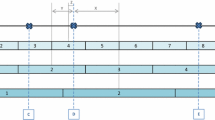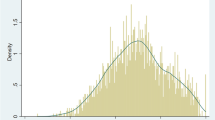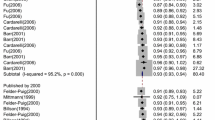Abstract
Purpose
The EuroQol 5-Dimension (EQ-5D) is a widely used health status instrument for cost-utility analysis of healthcare interventions. Recently, its 5-Level version (EQ-5D-5L) and a protocol for conducting valuation of its health states were developed. We propose four approaches for estimating the sample size for EQ-5D-5L valuation according to the standardized procedures of the protocol.
Methods
The first approach is for estimating mean health state utility values with a desired precision level using a regression model. The second approach, empirical in nature, determines a sample size based on mean absolute error in predicting health state values using a large-scale reference study. The last two approaches are for assessing the significance of regression coefficients of health state descriptors and to estimate the regression coefficients with a desired precision for predicting health state utility values.
Results
Using data from a Singaporean study, we estimated parameters that are useful for sample size determination, including the design effect. Each of the approaches was illustrated with examples and pragmatic recommendations were provided.
Conclusions
Capitalizing on the EQ-5D-5L valuation protocol, we proposed four sample size estimation approaches which can help to decide an appropriate sample size for a value set study.

Similar content being viewed by others
References
Longworth, L., Yang, Y., Young, T., Mulhern, B., Alava, M. H., Mukuria, C., et al. (2014). Use of generic and condition-specific measures of health-related quality of life in NICE decision-making: A systematic review, statistical modelling and survey. Health Technology Assessment, 18(9), 1–224. doi:10.3310/hta18090.
Herdman, M., Gudex, C., Lloyd, A., Janssen, M., Kind, P., Parkin, D., et al. (2011). Development and preliminary testing of the new five-level version of EQ-5D (EQ-5D-5L). Quality of Life Research, 20(10), 1727–1736. doi:10.1007/s11136-011-9903-x.
Oppe, M., Rand-Hendriksen, K., Shah, K., Ramos-Goñi, J. M., & Luo, N. (2016). EuroQol protocols for time trade-off valuation of health outcomes. PharmacoEconomics. doi:10.1007/s40273-016-0404-1.
Oppe, M., Devlin, N. J., van Hout, B., Krabbe, P. F., & de Charro, F. (2014). A program of methodological research to arrive at the new international EQ-5D-5L valuation protocol. Value in Health, 17(4), 445–453. doi:10.1016/j.jval.2014.04.002.
EuroQol Group: EQ-5D-5L Value Sets. (2016). Retrieved March 17, 2017, from http://www.euroqol.org/about-eq-5d/valuation-of-eq-5d/eq-5d-5l-value-sets.html.
Devlin, N. J., & Krabbe, P. F. (2013). The development of new research methods for the valuation of EQ-5D-5L. The European Journal of Health Economics, 14(Suppl 1), 1. doi:10.1007/s10198-013-0502-3.
EuroQol Group: EQ-5D-5L User Guide. (2015). Retrieved February 6, 2016, from http://www.euroqol.org/fileadmin/user_upload/Documenten/PDF/Folders_Flyers/EQ-5D-5L_UserGuide_2015.pdf.
Luo, N., Wang, P., Thumboo, J., Lim, Y.-W., & Vrijhoef, H. J. (2014). Valuation of EQ-5D-3L health states in Singapore: Modeling of time trade-off values for 80 empirically observed health states. Pharmacoeconomics, 32(5), 495–507. doi:10.1007/s40273-014-0142-1.
Williams, R. L. (2000). A note on robust variance estimation for cluster-correlated data. Biometrics, 56(2), 645–646. doi:10.1111/j.0006-341X.2000.00645.x.
Verbeke, G., & Molenberghs, G. (2009). Linear mixed models for longitudinal data. New York: Springer.
Oppe, M., Devlin, N. J., & Szende, A. (2007). EQ-5D value sets: inventory, comparative review and user guide. Rotterdam: Springer.
Chen, X., Ender, P., Michaelis, M., Wells, C. (2003). Regression with Stata. Retrieved March 17, 2017, from http://www.ats.ucla.edu/stat/stata/webbooks/reg/default.htm.
Parzen, M., Lipsitz, S. R., & Dear, K. B. (1998). Does clustering affect the usual test statistics of no treatment effect in a randomized clinical trial? Biometrical Journal, 40(4), 385–402. doi:10.1002/(SICI)1521-4036(199808)40:4.
Kahan, B. C., & Morris, T. P. (2013). Assessing potential sources of clustering in individually randomised trials. BMC Medical Research Methodology, 13(1), 1. doi:10.1186/1471-2288-13-58.
Donner, A., & Klar, N. (2000). Design and analysis of cluster randomization trials in health research. London: Wiley.
Heeringa, S. G., West, B. T., & Berglund, P. A. (2010). Applied survey data analysis. Boca Raton: CRC Press.
Lee, E. S., & Forthofer, R. N. (2005). Analyzing complex survey data (Vol. 71). Newbury Park: Sage Publications.
Coretti, S., Ruggeri, M., & McNamee, P. (2014). The minimum clinically important difference for EQ-5D index: a critical review. Expert Review of Pharmacoeconomics & Outcomes Research, 14(2), 221–233. doi:10.1586/14737167.2014.894462.
Montgomery, D. C., Peck, E. A., & Vining, G. G. (2015). Introduction to linear regression analysis. New York: Wiley.
Lamers, L. M., McDonnell, J., Stalmeier, P. F., Krabbe, P. F., & Busschbach, J. J. (2006). The Dutch tariff: Results and arguments for an effective design for national EQ-5D valuation studies. Health Economics, 15(10), 1121–1132. doi:10.1002/hec.1124.
Nolan, C. M., Longworth, L., Lord, J., Canavan, J. L., Jones, S. E., Kon, S. S., et al. (2016). The EQ-5D-5L health status questionnaire in COPD: Validity, responsiveness and minimum important difference. Thorax, 71(6), 493–500. doi:10.1136/thoraxjnl-2015-207782.
Dolan, P., Dudex, C., Kind, P., Williams, A. (1994). The measurement and valuation of health, The first report on the main survey. Retrieved March 17, 2017, from https://www.york.ac.uk/media/che/documents/reports/MVH%20First%20Report.pdf.
Chevalier, J., & de Pouvourville, G. (2013). Valuing EQ-5D using time trade-off in France. The European Journal of Health Economics, 14(1), 57–66. doi:10.1007/s10198-011-0351-x.
Cameron, A. C., & Miller, D. L. (2015). A practitioner’s guide to cluster-robust inference. Journal of Human Resources, 50(2), 317–372. doi:10.3368/jhr.50.2.317.
Lamers, L. M., Stalmeier, P. F., Krabbe, P. F., & Busschbach, J. J. (2006). Inconsistencies in TTO and VAS values for EQ-5D health states. Medical Decision Making, 26(2), 173–181. doi:10.1177/0272989X06286480.
Devlin, N. J., Hansen, P., Kind, P., & Williams, A. (2003). Logical inconsistencies in survey respondents’ health state valuations-a methodological challenge for estimating social tariffs. Health Economics, 12(7), 529–544. doi:10.1002/hec.741.
Purba, F. D., Hunfeld, J. A., Iskandarsyah, A., Fitriana, T. S., Sadarjoen, S. S., Passchier, J., et al. (2016). Employing quality control and feedback to the EQ-5D-5L valuation protocol to improve the quality of data collection. Quality of Life Research. doi:10.1007/s11136-016-1445-9.
Acknowledgements
We thank Juan Manuel Ramos Goñi (Senior Scientist, The EuroQol Office) and Lu Qingshu (Senior Biostatistician, Singapore Clinical Research Institute) for helpful comments on the earlier versions of this article. The authors appreciate the support of Duke-NUS/SingHealth Academic Research Institute and the medical editing assistance of Serene Ong (Medical writer, Duke-NUS Medical School).
Funding
Financial support for this study was provided entirely by a Health Services Research Competitive Research Grant (HSRG/0038/2013) from the National Medical Research Council, Singapore. The last author (YBC) was supported by the National Research Foundation, Singapore, under its Clinician Scientist Award (NMRC/CSA/0039/2012) administered by the Singapore Ministry of Health’s National Medical Research Council. The funding agreement ensured the authors’ independence in designing the study, interpreting the data, writing, and publishing the report.
Author information
Authors and Affiliations
Corresponding author
Ethics declarations
Conflict of interest
The authors declare that they have no conflict of interest.
Informed consent
Informed consent was obtained from all individual participants included in the study.
Research involving human participants and/or animals
All procedures performed in studies involving human participants were in accordance with the ethical standards of the institutional and/or national research committee and with the 1964 Helsinki Declaration and its later amendments or comparable ethical standards. This article does not contain any studies with animals performed by any of the authors.
Electronic supplementary material
Below is the link to the electronic supplementary material.
Rights and permissions
About this article
Cite this article
Gandhi, M., Xu, Y., Luo, N. et al. Sample size determination for EQ-5D-5L value set studies. Qual Life Res 26, 3365–3376 (2017). https://doi.org/10.1007/s11136-017-1685-3
Accepted:
Published:
Issue Date:
DOI: https://doi.org/10.1007/s11136-017-1685-3




